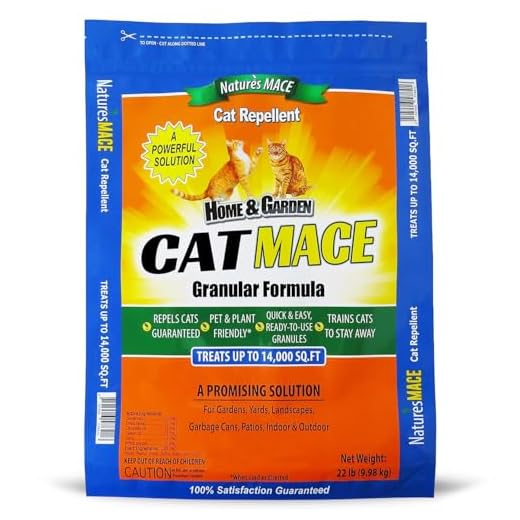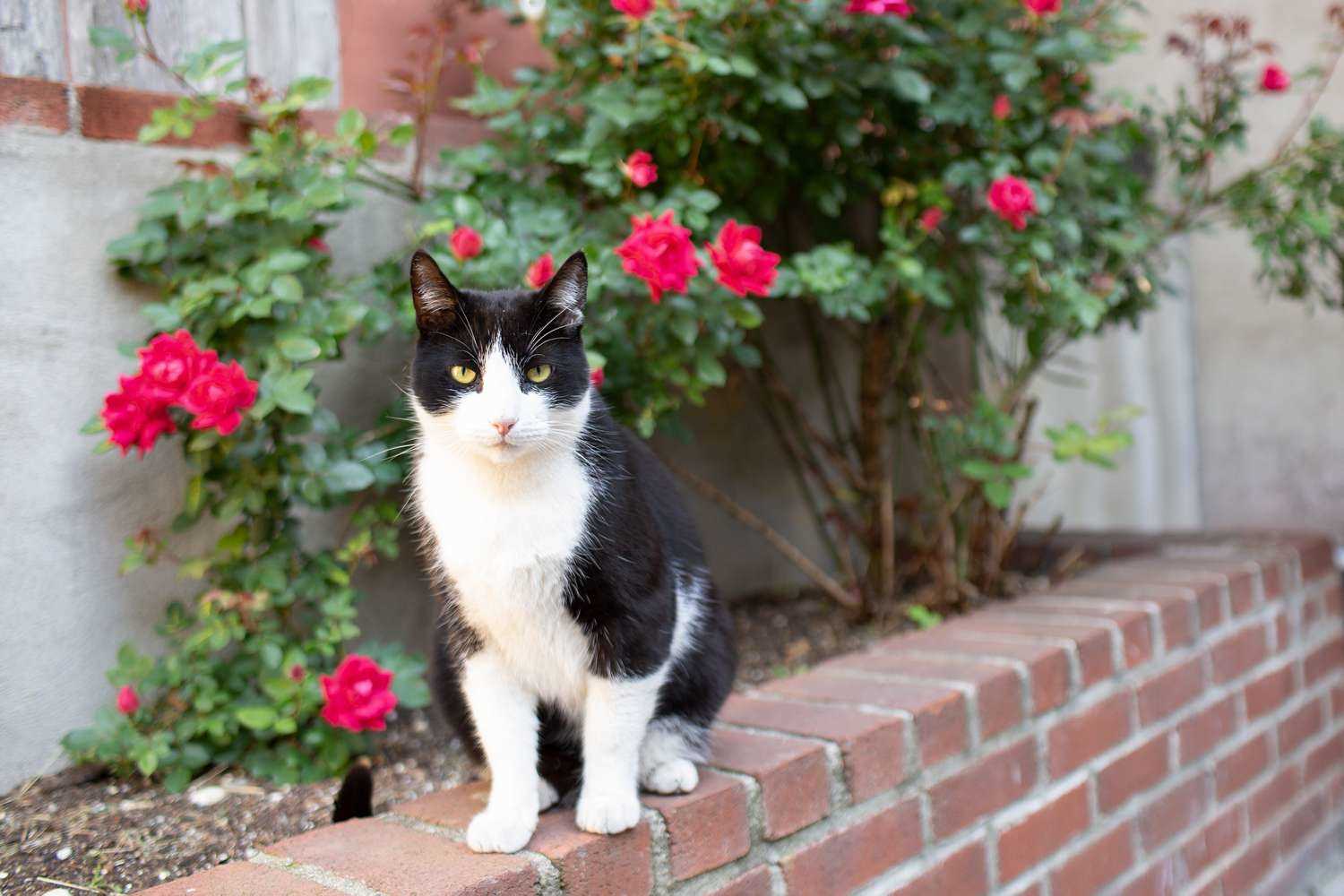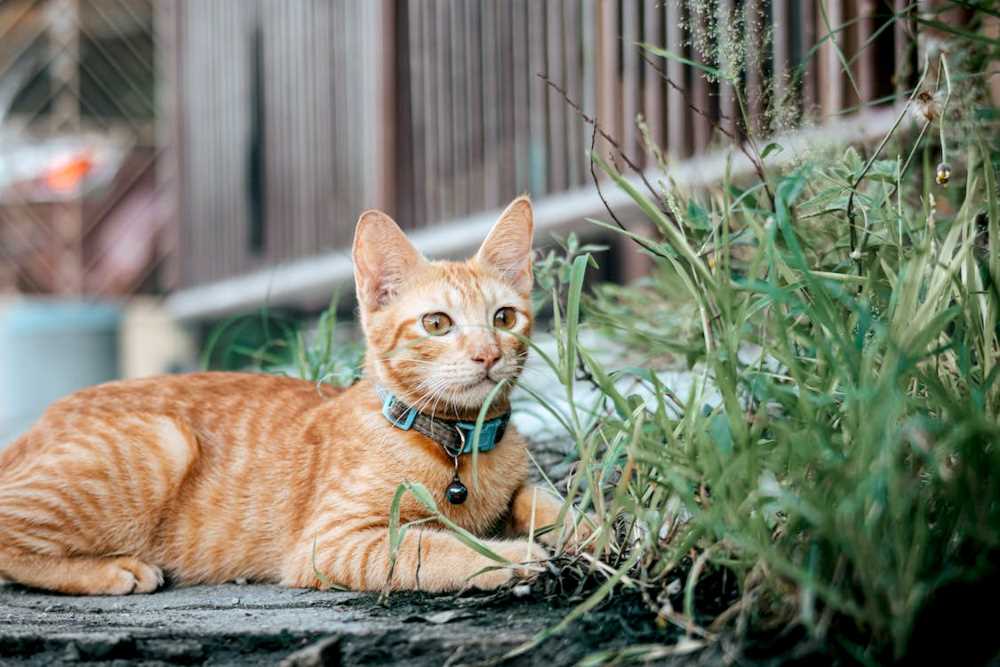



First things first, consider using citrus peels or sprays around your territory. Cats generally dislike the smell of citrus, making it an effective natural deterrent. Toss some orange or lemon peels in the corners or spray a diluted citrus solution to create a barrier that’s unappealing to them.
Another strategy involves planting certain herbs. Rosemary, lavender, and rue are known to repel feline visitors. Incorporating these plants into your garden not only enhances its beauty but also serves as a natural barrier against unwelcome guests.
Creating physical barriers like chicken wire or garden fencing can also be beneficial. Installing a fence that’s at least six feet high, or even adding an inward overhang can prevent any determined climbers from entering your space.
Sound deterrents can be effective too. Ultrasonic devices emit a sound that’s unpleasant for cats but inaudible to humans. Placing these devices strategically around your property can help keep those wandering whiskers at bay.
Lastly, a sprinkle of coffee grounds around your plants can act as a repellent. Cats tend to steer clear of this scent, and it’s an eco-friendly method to protect your space while adding nutrients to the soil.
Effective Strategies for Deterrence
Applying citrus peels around your territory can repel unwanted visitors. Cats dislike the smell, making it an excellent natural barrier.
Utilize Motion-Activated Devices

Installing motion-activated sprinklers or ultrasonic deterrents can startle intruders, encouraging them to avoid your space. These devices activate with movement, creating an unexpected experience that discourages return visits.
Establish Physical Barriers
Fencing can be an effective solution. Opt for tall, sturdy barriers that are difficult to climb. Adding a top barrier or an inward slope can enhance its effectiveness. Consider planting dense shrubs or thorny bushes at the base, creating an additional obstacle for any intruders.
Creating a less appealing environment with fencing and natural deterrents can make your area less attractive, ensuring it remains undisturbed.
Utilizing Natural Deterrents for Felines
Citronella oil works wonders. Sprinkling it around the area creates an unappealing scent for many furry visitors. Mix it with water for a spray solution, applying it weekly for best results.
Plants That Repel
Certain botanical species can deter unwelcome visitors. Consider planting lavender, rosemary, or rue. These plants not only enhance the aesthetics but emit scents that most whiskered wanderers dislike.
Ground Cover Solutions

Using rough-textured materials like pine cones or sharp-edged stones can create an uncomfortable surface for those curious paws. Scatter them in strategic spots to discourage exploration.
For further insights into outdoor companions, check the best cats for outdoors and discover what makes a great outdoor pet. And for picky eaters, explore the best wet cat food for picky cats to keep your own furry friend satisfied.
Installing Physical Barriers to Prevent Cat Access
One of the most straightforward methods involves erecting fences. A sturdy fence around the perimeter can deter unwanted visitors. Aim for a height of at least six feet to prevent jumping. Adding an inward angle or a roller top can make it even harder for agile intruders to climb over.
Choosing Materials
Wood, vinyl, or chain link are solid choices. Ensure that there are no gaps at the base–use materials like concrete or heavy-duty mesh to fill any openings. Burying a portion of the fence underground will stop digging attempts from curious paws.
Creating Additional Obstacles

Incorporating thorny plants along the fence line can serve as a natural deterrent. Consider using prickly bushes that are not only unwelcoming but also add greenery to the space. Additionally, placing decorative stones or gravel can make it uncomfortable to walk through, discouraging entry.
For those who prefer a more playful approach, a catio–an enclosed outdoor space–can be a safe haven for my feline friends while ensuring the area remains secure. This allows outdoor enjoyment without the worry of wandering.
Implementing these barriers can create a more peaceful environment for myself and my human. With the right setup, unwanted guests will think twice before exploring the territory.
First things first, consider using citrus peels or sprays around your territory. Cats generally dislike the smell of citrus, making it an effective natural deterrent. Toss some orange or lemon peels in the corners or spray a diluted citrus solution to create a barrier that’s unappealing to them.
Another strategy involves planting certain herbs. Rosemary, lavender, and rue are known to repel feline visitors. Incorporating these plants into your garden not only enhances its beauty but also serves as a natural barrier against unwelcome guests.
Creating physical barriers like chicken wire or garden fencing can also be beneficial. Installing a fence that’s at least six feet high, or even adding an inward overhang can prevent any determined climbers from entering your space.
Sound deterrents can be effective too. Ultrasonic devices emit a sound that’s unpleasant for cats but inaudible to humans. Placing these devices strategically around your property can help keep those wandering whiskers at bay.
Lastly, a sprinkle of coffee grounds around your plants can act as a repellent. Cats tend to steer clear of this scent, and it’s an eco-friendly method to protect your space while adding nutrients to the soil.
Effective Strategies for Deterrence
Applying citrus peels around your territory can repel unwanted visitors. Cats dislike the smell, making it an excellent natural barrier.
Utilize Motion-Activated Devices

Installing motion-activated sprinklers or ultrasonic deterrents can startle intruders, encouraging them to avoid your space. These devices activate with movement, creating an unexpected experience that discourages return visits.
Establish Physical Barriers
Fencing can be an effective solution. Opt for tall, sturdy barriers that are difficult to climb. Adding a top barrier or an inward slope can enhance its effectiveness. Consider planting dense shrubs or thorny bushes at the base, creating an additional obstacle for any intruders.
Creating a less appealing environment with fencing and natural deterrents can make your area less attractive, ensuring it remains undisturbed.
Utilizing Natural Deterrents for Felines
Citronella oil works wonders. Sprinkling it around the area creates an unappealing scent for many furry visitors. Mix it with water for a spray solution, applying it weekly for best results.
Plants That Repel
Certain botanical species can deter unwelcome visitors. Consider planting lavender, rosemary, or rue. These plants not only enhance the aesthetics but emit scents that most whiskered wanderers dislike.
Ground Cover Solutions

Using rough-textured materials like pine cones or sharp-edged stones can create an uncomfortable surface for those curious paws. Scatter them in strategic spots to discourage exploration.
For further insights into outdoor companions, check the best cats for outdoors and discover what makes a great outdoor pet. And for picky eaters, explore the best wet cat food for picky cats to keep your own furry friend satisfied.
Installing Physical Barriers to Prevent Cat Access
One of the most straightforward methods involves erecting fences. A sturdy fence around the perimeter can deter unwanted visitors. Aim for a height of at least six feet to prevent jumping. Adding an inward angle or a roller top can make it even harder for agile intruders to climb over.
Choosing Materials
Wood, vinyl, or chain link are solid choices. Ensure that there are no gaps at the base–use materials like concrete or heavy-duty mesh to fill any openings. Burying a portion of the fence underground will stop digging attempts from curious paws.
Creating Additional Obstacles

Incorporating thorny plants along the fence line can serve as a natural deterrent. Consider using prickly bushes that are not only unwelcoming but also add greenery to the space. Additionally, placing decorative stones or gravel can make it uncomfortable to walk through, discouraging entry.
For those who prefer a more playful approach, a catio–an enclosed outdoor space–can be a safe haven for my feline friends while ensuring the area remains secure. This allows outdoor enjoyment without the worry of wandering.
Implementing these barriers can create a more peaceful environment for myself and my human. With the right setup, unwanted guests will think twice before exploring the territory.
First things first, consider using citrus peels or sprays around your territory. Cats generally dislike the smell of citrus, making it an effective natural deterrent. Toss some orange or lemon peels in the corners or spray a diluted citrus solution to create a barrier that’s unappealing to them.
Another strategy involves planting certain herbs. Rosemary, lavender, and rue are known to repel feline visitors. Incorporating these plants into your garden not only enhances its beauty but also serves as a natural barrier against unwelcome guests.
Creating physical barriers like chicken wire or garden fencing can also be beneficial. Installing a fence that’s at least six feet high, or even adding an inward overhang can prevent any determined climbers from entering your space.
Sound deterrents can be effective too. Ultrasonic devices emit a sound that’s unpleasant for cats but inaudible to humans. Placing these devices strategically around your property can help keep those wandering whiskers at bay.
Lastly, a sprinkle of coffee grounds around your plants can act as a repellent. Cats tend to steer clear of this scent, and it’s an eco-friendly method to protect your space while adding nutrients to the soil.
Effective Strategies for Deterrence
Applying citrus peels around your territory can repel unwanted visitors. Cats dislike the smell, making it an excellent natural barrier.
Utilize Motion-Activated Devices

Installing motion-activated sprinklers or ultrasonic deterrents can startle intruders, encouraging them to avoid your space. These devices activate with movement, creating an unexpected experience that discourages return visits.
Establish Physical Barriers
Fencing can be an effective solution. Opt for tall, sturdy barriers that are difficult to climb. Adding a top barrier or an inward slope can enhance its effectiveness. Consider planting dense shrubs or thorny bushes at the base, creating an additional obstacle for any intruders.
Creating a less appealing environment with fencing and natural deterrents can make your area less attractive, ensuring it remains undisturbed.
Utilizing Natural Deterrents for Felines
Citronella oil works wonders. Sprinkling it around the area creates an unappealing scent for many furry visitors. Mix it with water for a spray solution, applying it weekly for best results.
Plants That Repel
Certain botanical species can deter unwelcome visitors. Consider planting lavender, rosemary, or rue. These plants not only enhance the aesthetics but emit scents that most whiskered wanderers dislike.
Ground Cover Solutions

Using rough-textured materials like pine cones or sharp-edged stones can create an uncomfortable surface for those curious paws. Scatter them in strategic spots to discourage exploration.
For further insights into outdoor companions, check the best cats for outdoors and discover what makes a great outdoor pet. And for picky eaters, explore the best wet cat food for picky cats to keep your own furry friend satisfied.
Installing Physical Barriers to Prevent Cat Access
One of the most straightforward methods involves erecting fences. A sturdy fence around the perimeter can deter unwanted visitors. Aim for a height of at least six feet to prevent jumping. Adding an inward angle or a roller top can make it even harder for agile intruders to climb over.
Choosing Materials
Wood, vinyl, or chain link are solid choices. Ensure that there are no gaps at the base–use materials like concrete or heavy-duty mesh to fill any openings. Burying a portion of the fence underground will stop digging attempts from curious paws.
Creating Additional Obstacles

Incorporating thorny plants along the fence line can serve as a natural deterrent. Consider using prickly bushes that are not only unwelcoming but also add greenery to the space. Additionally, placing decorative stones or gravel can make it uncomfortable to walk through, discouraging entry.
For those who prefer a more playful approach, a catio–an enclosed outdoor space–can be a safe haven for my feline friends while ensuring the area remains secure. This allows outdoor enjoyment without the worry of wandering.
Implementing these barriers can create a more peaceful environment for myself and my human. With the right setup, unwanted guests will think twice before exploring the territory.










